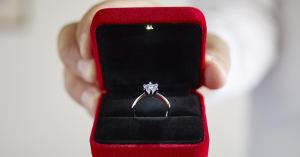“Reboot” is often a dirty word in the movie industry these days – and not without good reason. For every idea recycled into a fresh franchise (see: 21 Jump Street), there are ten that see their potential squandered (see: most other reboots you can think of). Tom Cruise‘s reboot of The Mummy falls somewhere in the middle of the pack: as a standalone reboot, The Mummy is not all that memorable – but luckily it gains a lot of intrigue and significance, serving as the foundation for an entire Dark Universe of action-horror movies to come.
The rebooted storyline follows Nick Morton (Cruise), a US military recon specialist who moonlights as a thief, stealing valuable antiquities and artifacts from war zones. While serving in Iraq, Nick and his partner Sgt. Chris Vail (Jake Johnson), get wind of an underground chamber of treasure, which is mistaken for a tomb when it is actually an ancient Egyptian prison.
Videos by PopCulture.com
That prison holds Princess Ahmanet, an Egyptian princess who embraced the darkness of Set, Egyptian god of death, and became a monster. As punishment for her evil, Ahmanet was mummified alive and buried in a fortified prison – until Nick, Chris, and archaeologist Jenny Halsey (Annabelle Wallis) unwittingly release her. Freed from her prison, Ahmanet wastes no time using her powers to track down the mystical artifacts she needs to bring Set to earth in human form. To combat that threat, Jenny tries to recruit Nick into an organization that battles supernatural evil – but there’s one big problem: Nick has already died and been reborn under Ahmanet’s thrall, cursed to be her vessel for the ultimate evil.
The Mummy reboot comes by way of Alex Kurtzman, one-half of the famous writing team of Kurtzman and Orci (Star Trek and Transformers movie reboots), now stepping into his second directorial feature after helming the 2012 drama, People Like Us. With The Mummy, Kurtzman shows some strong (if still unpolished) potential to be a solid blockbuster movie director, with a reboot that barely holds together at the seams, but ultimately manages to provide a fun enough popcorn blockbuster adventure.

Visually, The Mummy is a mixed bag. The film offers some stunning sequences and visuals in terms of set design and action sequencing, but also the rough edges of a director still trying to master his craft. The cinematography by Ben Seresin (World War Z, Transformers 2) is grainy, gritty, and loses much of its dark luster to the tinted hues that come with 3D glasses. While The Mummy has some nice 3D-ready sequences to enjoy, on the whole, seeing the color palette in its natural 2D format is more worthwhile.
Where the movie excels is in selling the “action-horror” blend as a viable franchise concept. The Mummy is good at balancing Tom Cruise-brand blockbuster action with genuinely frightening and creepy horror movie elements, and Sofia Boutella’s Ahmanet is certainly a scarier Mummy than anything the Brendan Fraser trilogy could ever muster.
The storyline by Kurtzman, Christopher McQuarrie (Edge of Tomorrow), David Koepp (Angels & Demons, Indiana Jones 4), John Spaihts (Prometheus) and Jenny Lumet (Rachel Getting Married) has the usual “Too many cooks,” feel of a major blockbuster, with sub-plots that often feel like they are competing for dominance, rather than working together. All in all, The Mummy is your basic chase for an all-powerful MacGuffin – only this film must use its “downtime” to establish the larger Dark Universe franchise, rather than character or thematic arcs. It’s a scatterbrained focus for sure, but the movie is saved by the simplicity and momentum of the moment-to-moment chase, as well as some entertaining comedic moments (which mostly feel like McQuarrie’s contribution). Like a Marvel or DC movie, The Mummy drags in the second act when it stops to introduce and explain (in heavy exposition) how all of this supernatural mythos will apply to a larger Dark Universe to come – but again, there’s some exciting potential there, so it’s an excusable offense (a term that could be applied to the film as a whole).

Tom Cruise does a fine job leading things, showing off some playful comedic prowess as a selfish anti-hero type. Even though Cruise still has the physicality and impressive work ethic to make his action moments thrilling and convincing, it’s also hard not to think that this role could’ve been (should’ve been?) played by a younger actor.
Backing Cruise up is a strong supporting cast, with Annabelle Wallis playing a somewhat archaic (but still feisty) female lead; New Girl star Jake Johnson bringing some welcome levity and comedic relief in the sidekick role; and Kingsman star Sofia Boutella putting in maximum effort to make Ahmanet a thrilling and terrifying villain. Russell Crowe shows up to chew a lot of scenery as Dr. Jekyll, and the sequence with him and Cruise onscreen together for the first time is a welcome novelty.
In the end, The Mummy may not be the most revolutionary reboot attempt ever, but it’s still an entertaining enough summer movie experience to recommend a theatrical viewing. More importantly, the film serves as solid ‘proof of concept’ that a horror-action franchise based on classic movie monsters has room to compete against the massive superhero and Star Wars universes taking over the industry. Hopefully, the next chapter of Dark Universe comes with some more cinematic refinement, but this lead-in chapter is not the disaster it could’ve been. That’s all to say: there’s a speck of life to be found in The Mummy‘s resurrection.

The Mummy opens in theaters on June 9th. It is 1 hour and 50 minutes long, and is Rated PG-13 for violence, action and scary images, and for some suggestive content and partial nudity.
More Dark Universe News:








